From the archive: Sandringham House, the Norfolk home of The Royal Family
In 2008, Country Life was given extraordinary access to Sandringham House — including rooms not seen by the public. John Martin Robinson told its story, with photographs by Will Pryce for Country Life.
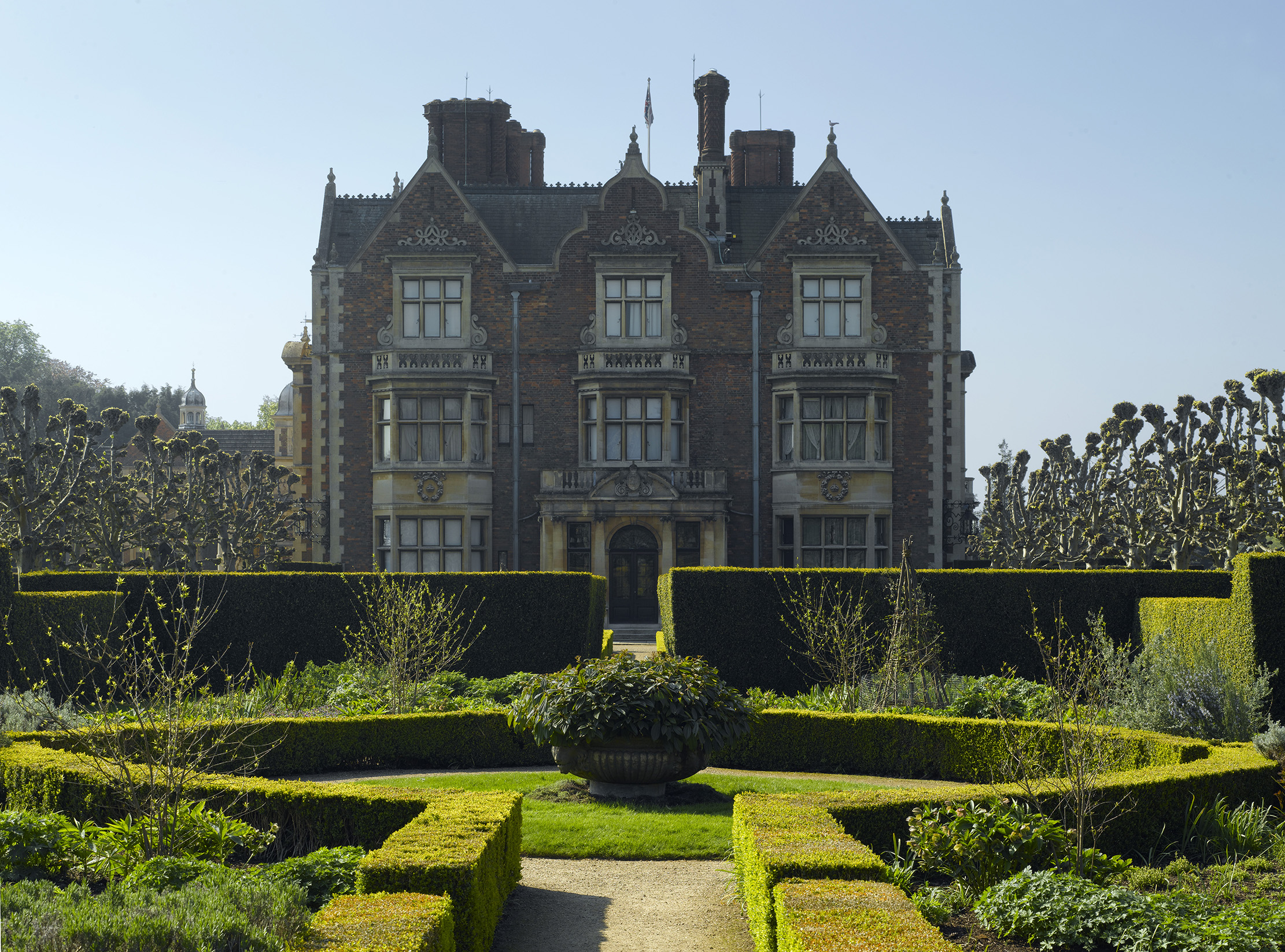


The cover of Country Life November 12, 2025, featuring Millie Pilkington's portrait of King Charles III in the garden at Sandringham.
The November 12, 2025, edition of Country Life is a very special issue indeed. We're honoured and thrilled that His Majesty The King has allowed Country Life access to the garden at Sandringham House in Norfolk. He has also permitted us to use some wonderful pictures, taken by Millie Pilkington.
You can enjoy the feature in the magazine, but to whet your appetite we wanted to bring you a treat from another occasion when Country Life was granted a similar favour at Sandringham: this 2008 article by John Martin Robinson on the history and architecture of this place, which is both royal residence and much-loved family home.
You can find out more about what's in the November 12, 2025 issue, and and order a copy, at this page.
Over the front door in the hall at Sandringham is an inscription: ‘This house was built by Albert Edward, Prince of Wales and Alexandra his wife in the year of Our Lord 1870.’ The property had been bought for the future Edward VII on his coming of age in 1862, at the initiative of his late father, the Prince Consort. This acquisition of a private estate reinforced the country-gentleman image of the monarchy. It was an image that had been first established by George III in the 1770s, and has remained strong in British royal life ever since.
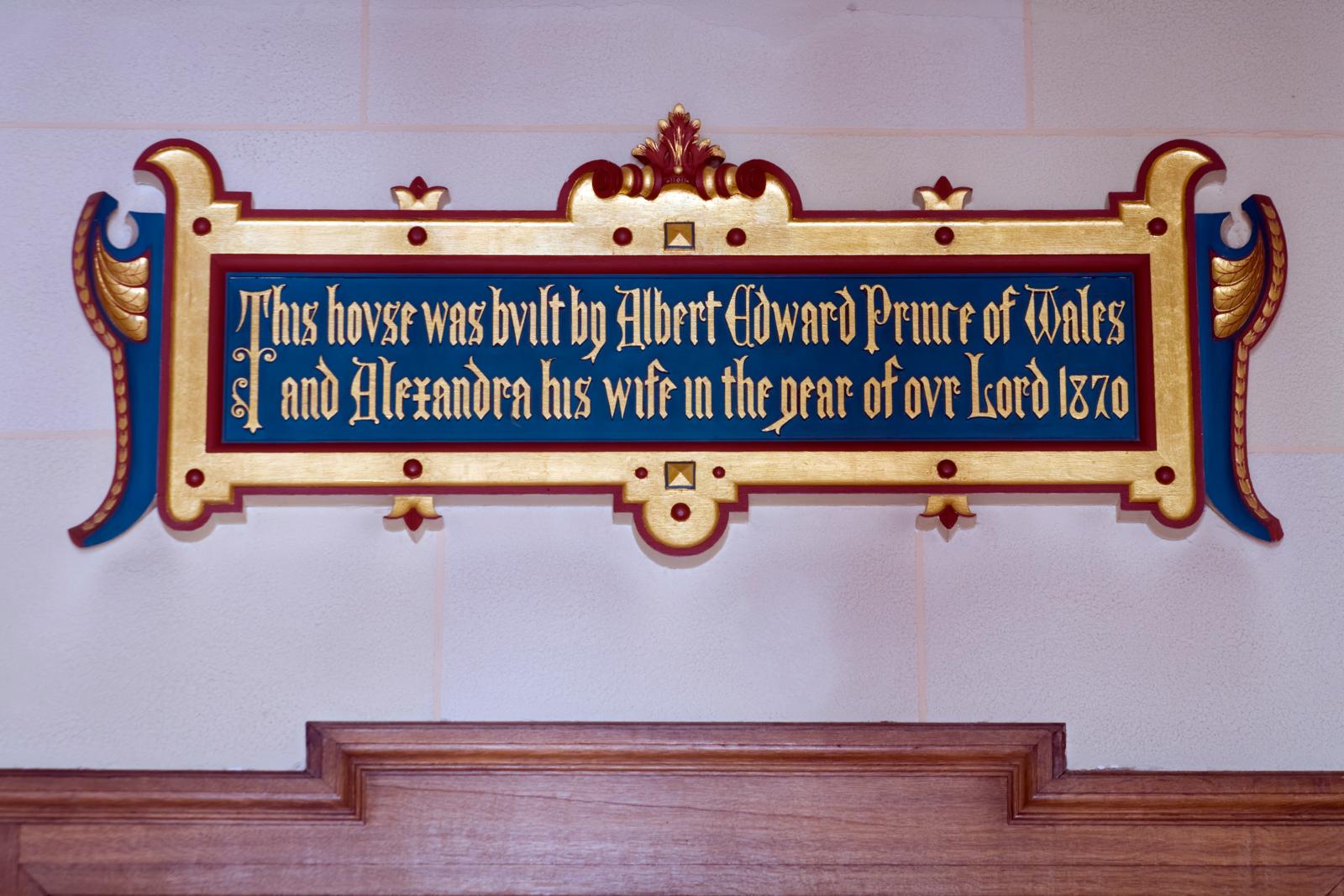
Sandringham House, as photographed in 2008 by Will Pryce for Country Life. ©Country Life Picture Library
Much of the charm and special interest of Sandringham derives from this combination of a quintessential English country estate with its special royal status and ownership.
[READ MORE: How the Sandringham Estate went fully organic]
It is both ordinary and highly unusual, not least in its ensured survival as a large Victorian country house through the decades when many architecturally similar buildings were demolished or converted to other uses, as being unmanageable and unfashionable. It is now a rare example of its type, lived in and beautifully maintained, complete with its original contents, gardens and dependent estate buildings, including the largest Victorian game larder in Europe.
Exquisite houses, the beauty of Nature, and how to get the most from your life, straight to your inbox.
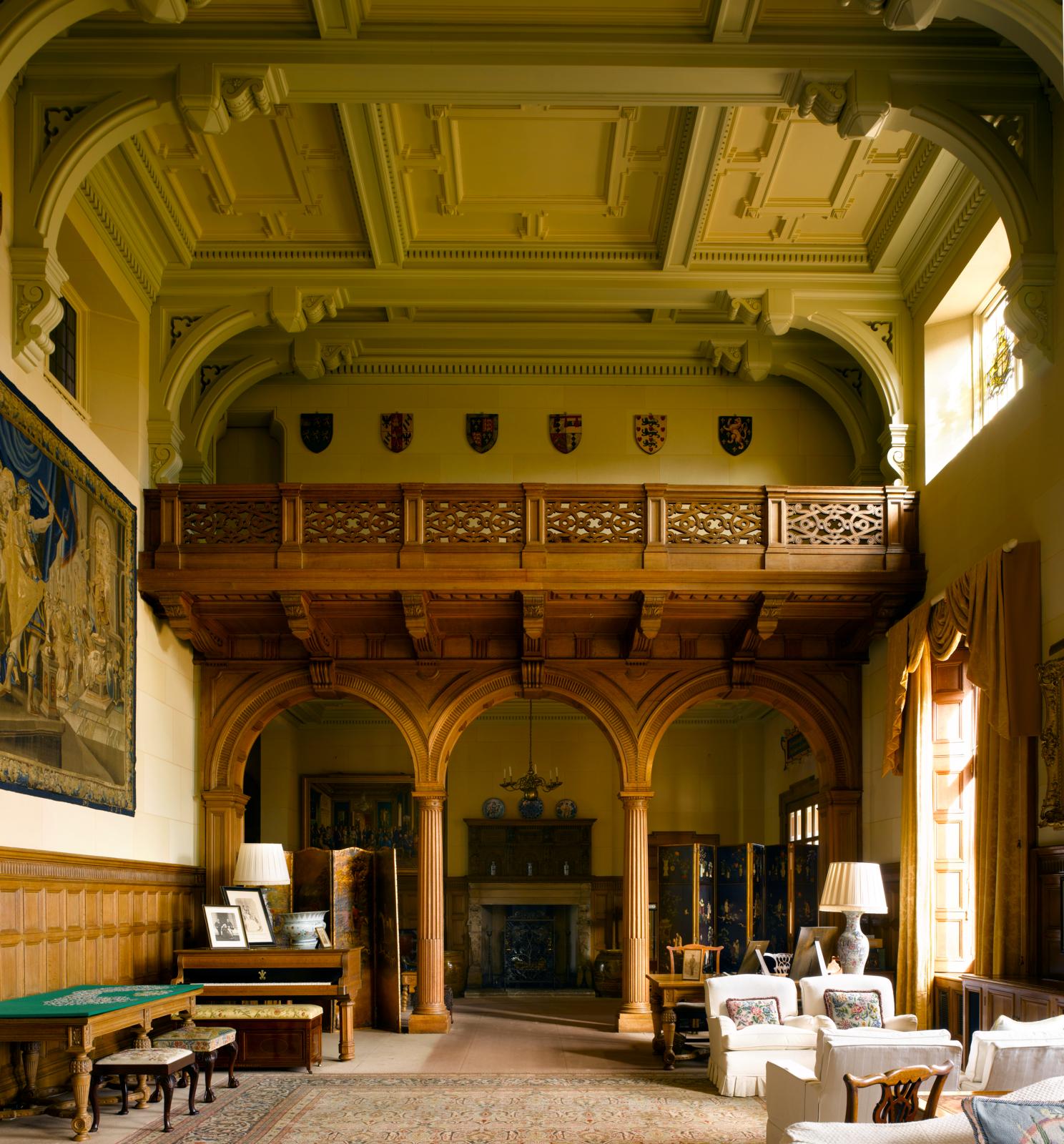
Sandringham House, as photographed in 2008 by Will Pryce for Country Life. ©Country Life Picture Library
Although it has undergone some later changes and alterations, the original character of the building and the personalities of its first chatelaines, Queen Alexandra and Queen Mary, still resonate. The light and comfortable rooms Queen Victoria described them as ‘luxurious’ recall the interiors of late-19th-century and Edwardian Mayfair as recorded in the photographs of Bedford Lemere, as well as the country houses of that era which are difficult to contemplate now without nostalgia for a lost gilded age.
Edward, Prince of Wales, was the leader of the ‘Smart Set’ of his day, and Sandringham was a ‘Smart House’, with its well-organised shoots, large house parties, theatricals and balls, but it is redolent of the period as a whole, when shared values shaped society and the buildings of the time. As Lady Desborough reminisced to The Times in 1929: ‘Society was very interchangeable: members of all the various sets, including the racing world, were often to be met at… country houses.’
Sandringham was considered to be one of the most comfortable houses of its day, but it was never a pretentious place. Most of the rooms were not large, and it developed out of an old gentry house. The atmosphere was, and is, homely. Queen Alexandra said to a guest: ‘To tell the truth, it is a very small place, but by means of all this gardening and laying out, we make it look very big.’

Sandringham House, as photographed in 2008 by Will Pryce for Country Life. ©Country Life Picture Library
When it was acquired in 1862, old Sandringham Hall was a plain, white-stuccoed house, built in 1771 by Cornish Henley, whose wife’s family, the Hostes, had owned the property since 1686. A Victorian ‘Jacobean’ front porch and knobbly carr-stone conservatory had been added by the architect S. S. Teulon. These characterful additions provided a stylistic pointer when it was decided to build a completely new house in 1870, to accommodate a growing family after the Prince of Wales’s marriage to Princess Alexandra of Denmark.
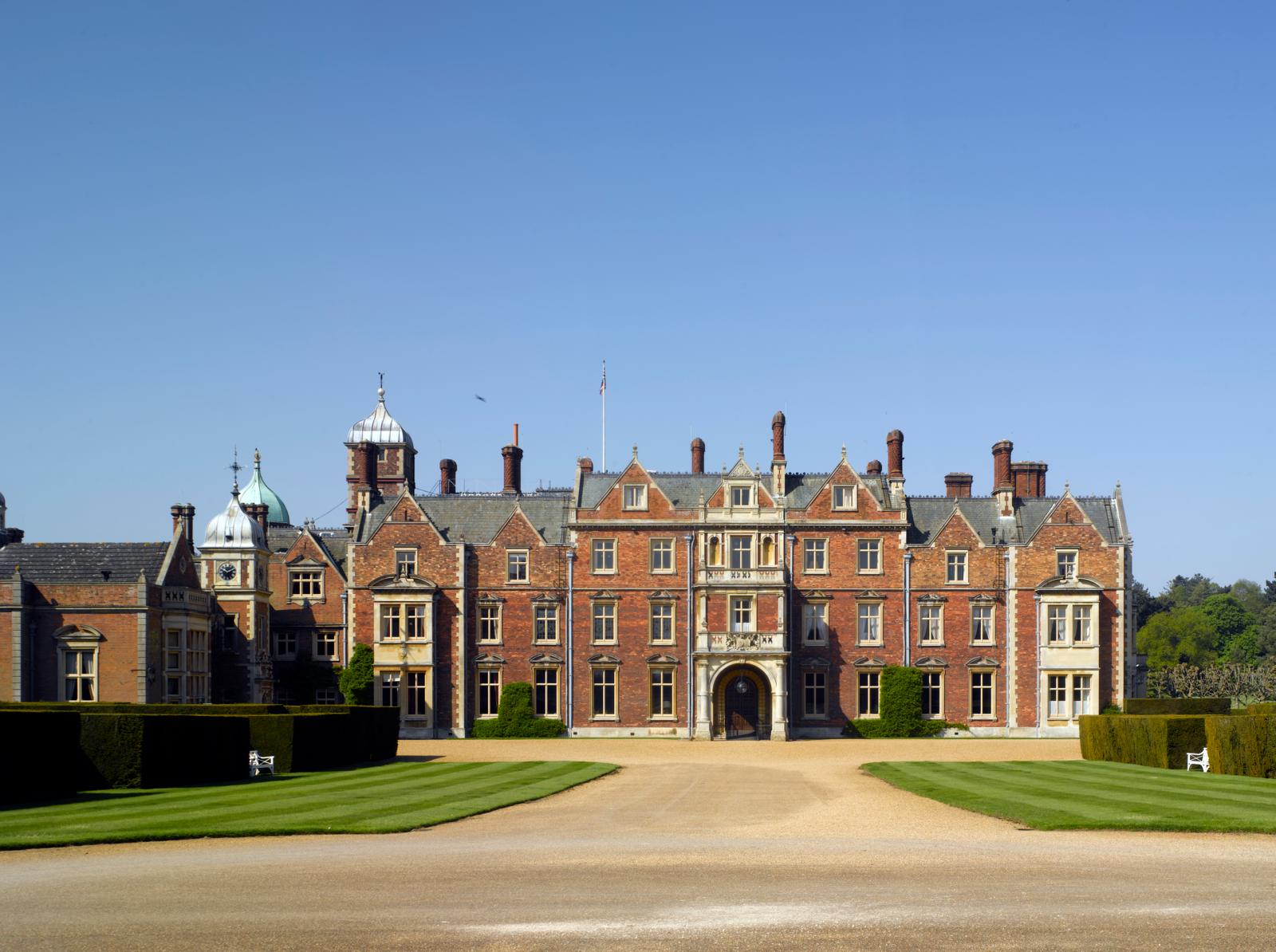
Sandringham House, as photographed in 2008 by Will Pryce for Country Life. ©Country Life Picture Library
The new house was designed by A. J. Humbert, an architect employed by Prince Albert for farms and houses at Osborne and Whippingham church on the Isle of Wight, as well as the two royal mausolea in the grounds at Frogmore. For Sandringham, Humbert, who was competent in most styles if not especially inspired, devised an ‘Old English’ or Jacobean manner, influenced by places such as Blickling, as well as Teulon’s additions to the previous house. It was executed on the old site in red brick with stone dressings, the shell being built by Goggs Brothers of Swaffham.
The two long main façades faced east and west, as had the previous house, the plan of which was partly reproduced, together with some internal features. The overall external effect was gently asymmetrical, enlivened by gables, bay windows, turrets with onion-shaped roofs and tall, ornamental, East Anglian brick chimneys. On the entrance front, there was a large porte cochère to shelter arriving guests, who proceeded into the Great Hall.
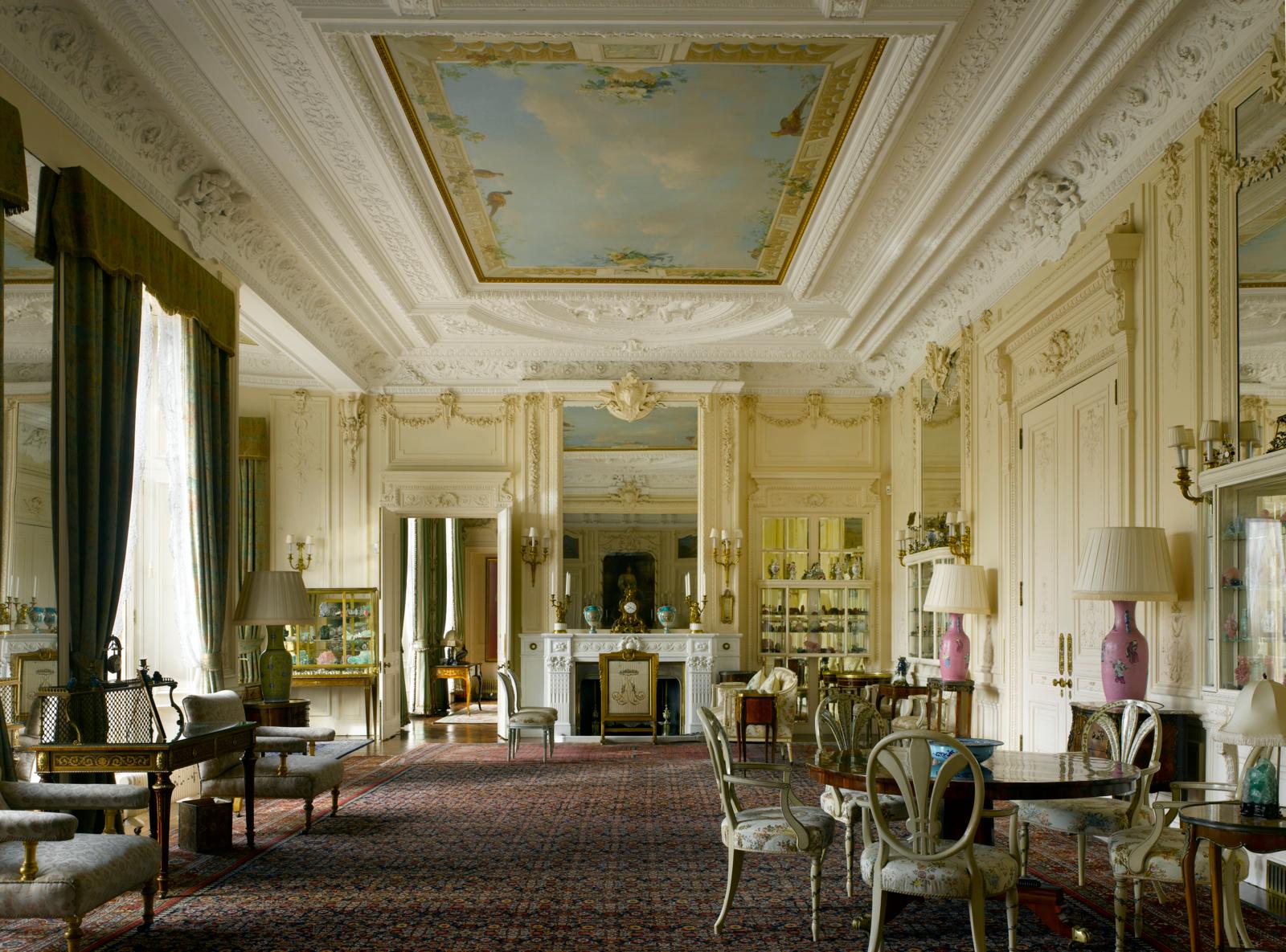
Sandringham House, as photographed in 2008 by Will Pryce for Country Life. ©Country Life Picture Library
On the garden front, Teulon’s projecting conservatory of darker gingerbread carrstone was retained and made into a billiard room. Next to it, in the same style, was built a single-storeyed ‘American’ bowling alley on the model of one the Prince of Wales had seen and admired at Trentham in Staffordshire, seat of the Duke of Sutherland. Sandringham continued to grow over subsequent years, and these later works greatly enhanced the composition, lending an organic quality to the ‘Jacobean’ architecture of the house.
In 1883–5, a large single-storeyed Ballroom was added on the south-east side of the entrance forecourt. This has its own separate outdoor entrance, an unusual feature made necessary because, as well as house parties, it was intended for the three annual balls given by the Victorian royal family: for the neighbouring gentry, for the tenant farmers on the estate, and for the staff and employees.
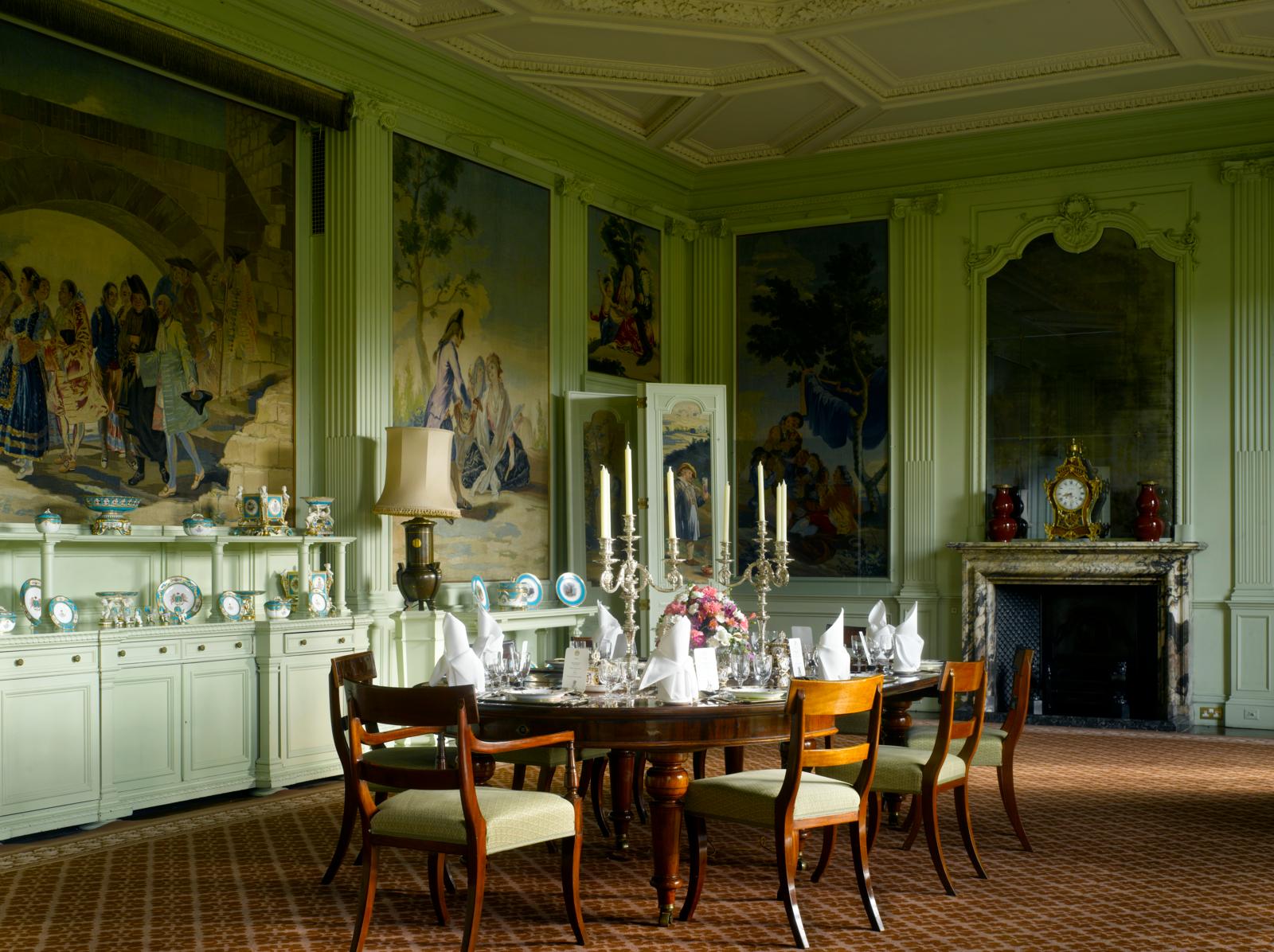
Sandringham House, as photographed in 2008 by Will Pryce for Country Life. ©Country Life Picture Library
It was designed by Col R. W. Edis, who was a colonel in the Artists Rifles (TA). He was the architect of Marylebone and Liverpool Street station hotels, as well as private houses in London and elsewhere. It deploys the same Jacobean style as Humbert’s main block, but is handled in a livelier manner. The visitors’ entrance incorporated stonework from Teulon’s demolished porch of the old house, which had been in store awaiting reuse. The additions of the 1880s by Edis also included a new kitchen, drying room and other service accommodation, but these subsidiary buildings at the back were demolished in 1969 as part of a domestic re-ordering and modernisation carried out under the direction of Hugh Casson.
When the Ballroom and new kitchen were completed in 1885, the Prince of Wales remarked: ‘I have, I think, finished all my improvements here.’ In 1891, however, a fire damaged the roof of the main house and destroyed 13 bedrooms, so Edis was called back to restore the damaged part, and also to add a range of bachelors’ bedrooms over the bowling alley, converting it into a substantial additional wing. This was also executed in ginger-coloured stone with brick trim. Internal fireproofing with iron doors was installed at the same time under the aegis of Capt Shaw of the London Fire Brigade.
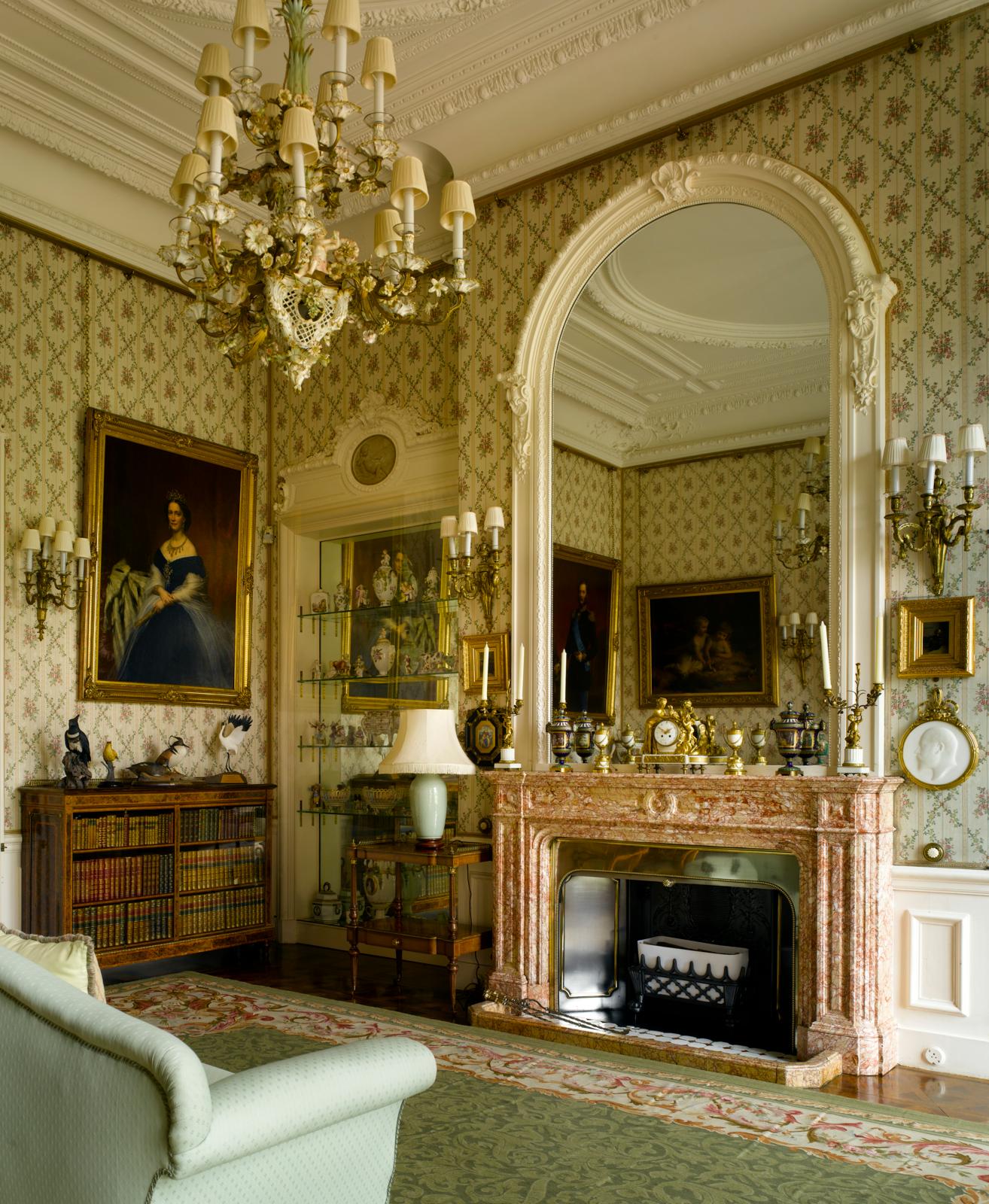
Sandringham House, as photographed in 2008 by Will Pryce for Country Life. ©Country Life Picture Library
Further works were carried out following Edward VII’s accession to the throne in 1901. At that time, the bowling alley was converted to a library, a change which Queen Alexandra regretted. The old segmental plaster ceiling was retained, but fitted oak shelves were installed and a comprehensive collection of contemporary books supplied by Hatchards of Piccadilly. Electric light was introduced in 1902 in place of gas, which had been made at the estate’s own gasworks at the Home Farm. The last architectural embellishments were two Classical stone porches added to the North Front and an angle of the West Front in 1904 and 1908.
Queen Alexandra continued to occupy Sandringham, which had been left to her for life, after the king’s death in 1910. She lived there in rooms silted up with the possessions of a lifetime, surrounded by devoted old courtiers, and continuing to develop and embellish the garden. A characteristic feature is the little summer house in the Pulhamite rockery overlooking the lake, The Queen’s Nest, erected for her by her comptroller, Gen Sir Dighton Probyn VC in 1904.
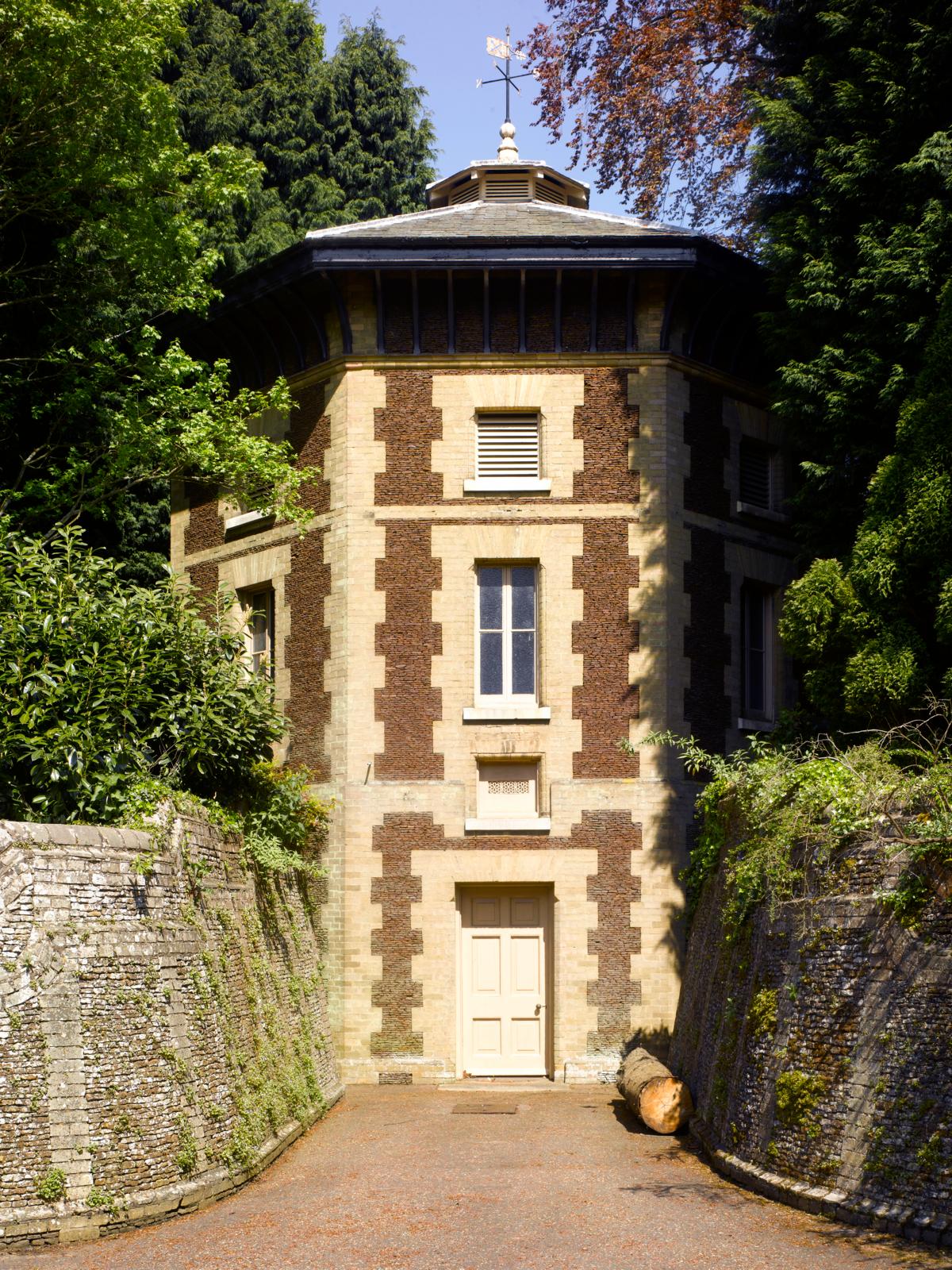
Sandringham House, as photographed in 2008 by Will Pryce for Country Life. ©Country Life Picture Library
It was not until 1925 that George V and Queen Mary moved into the ‘Big House’ from York Cottage in the grounds, which had been their home when they first married and which is now the Estate Office. Queen Mary immediately tackled the interior with her usual zest and taste, thinning the bric-à-brac and taxidermy, but keeping the vitrines of jade and Fabergé objects, many of them gifts from the Tsarina of Russia, Queen Alexandra’s sister. Queen Mary’s own additions of miniature silver, Worcester china, needlework, and good Georgian furniture enhanced the ‘Edwardian’ flavour of the house. George V himself took a keen interest in the shoot and farms, and in retrospect, the Norfolk estate seems perhaps even more closely associated with him than his father.
George VI and Queen Elizabeth carried out more work in 1938, simplifying the Great Hall and painting the dining room woodwork a light green colour that Queen Elizabeth had admired at Braemar Castle near Balmoral in Aberdeenshire. At the same time, the North garden was laid out by the distinguished landscape designer Sir Geoffrey Jellicoe as a splendidly scaled formal set-piece bounded by monumental hedges.
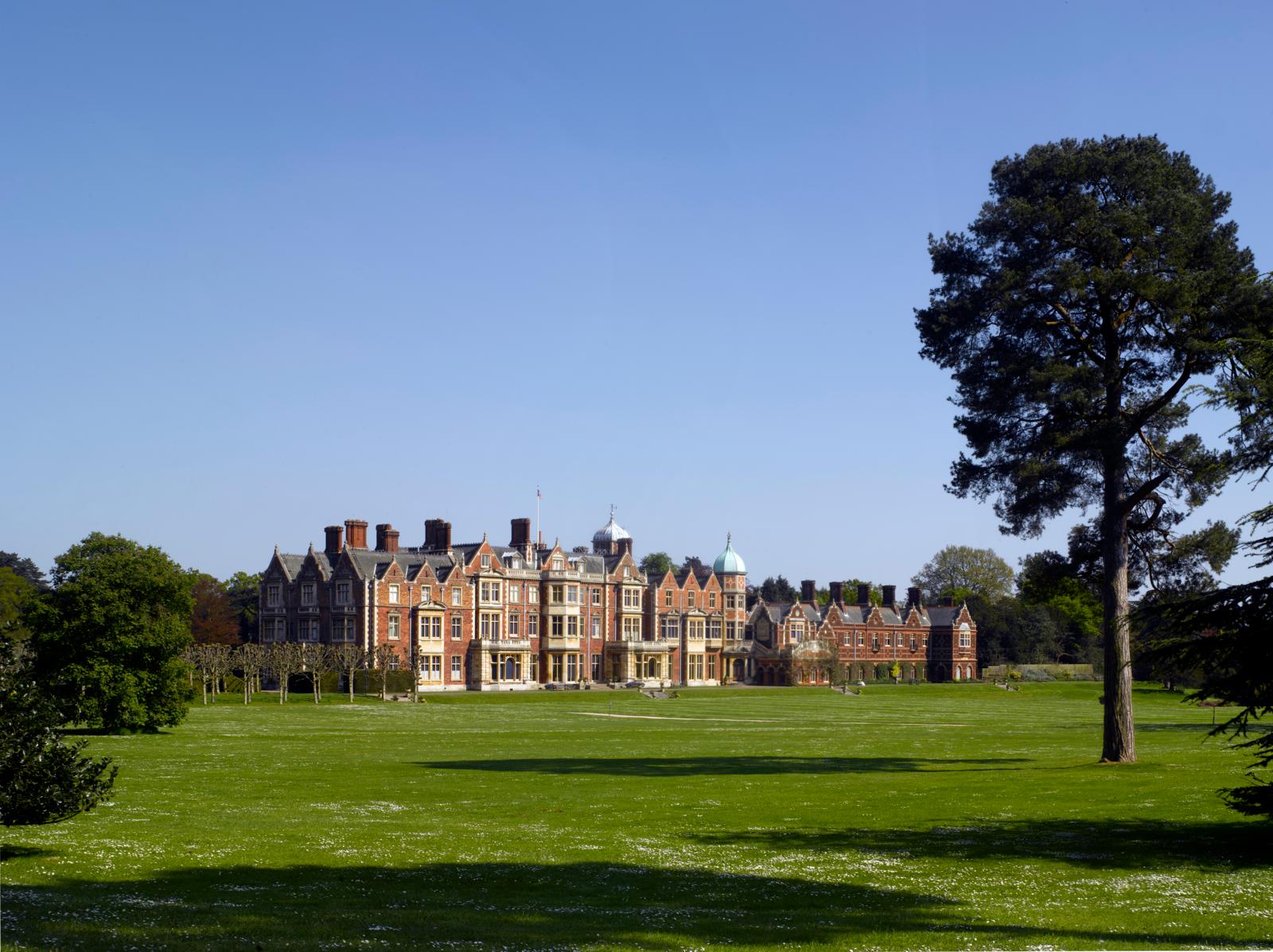
Sandringham House, as photographed in 2008 by Will Pryce for Country Life. ©Country Life Picture Library
Despite these changes, and further alterations, judicious prunings and redecoration of mainly subsidiary areas in the present reign, Sandringham preserves its late-Victorian character to a remarkable degree. The whole interior was fitted up in the 1870s by Holland & Son, the fashionable London firm that had furnished Osborne for Queen Victoria, and also did Marlborough House for the Prince of Wales. Holland’s work at Sandringham, which is documented in its ledgers at the V&A, was remarkably comprehensive and included the provision of the luncheon tent for royal shoots and unpacking and displaying Queen Alexandra’s birthday presents.
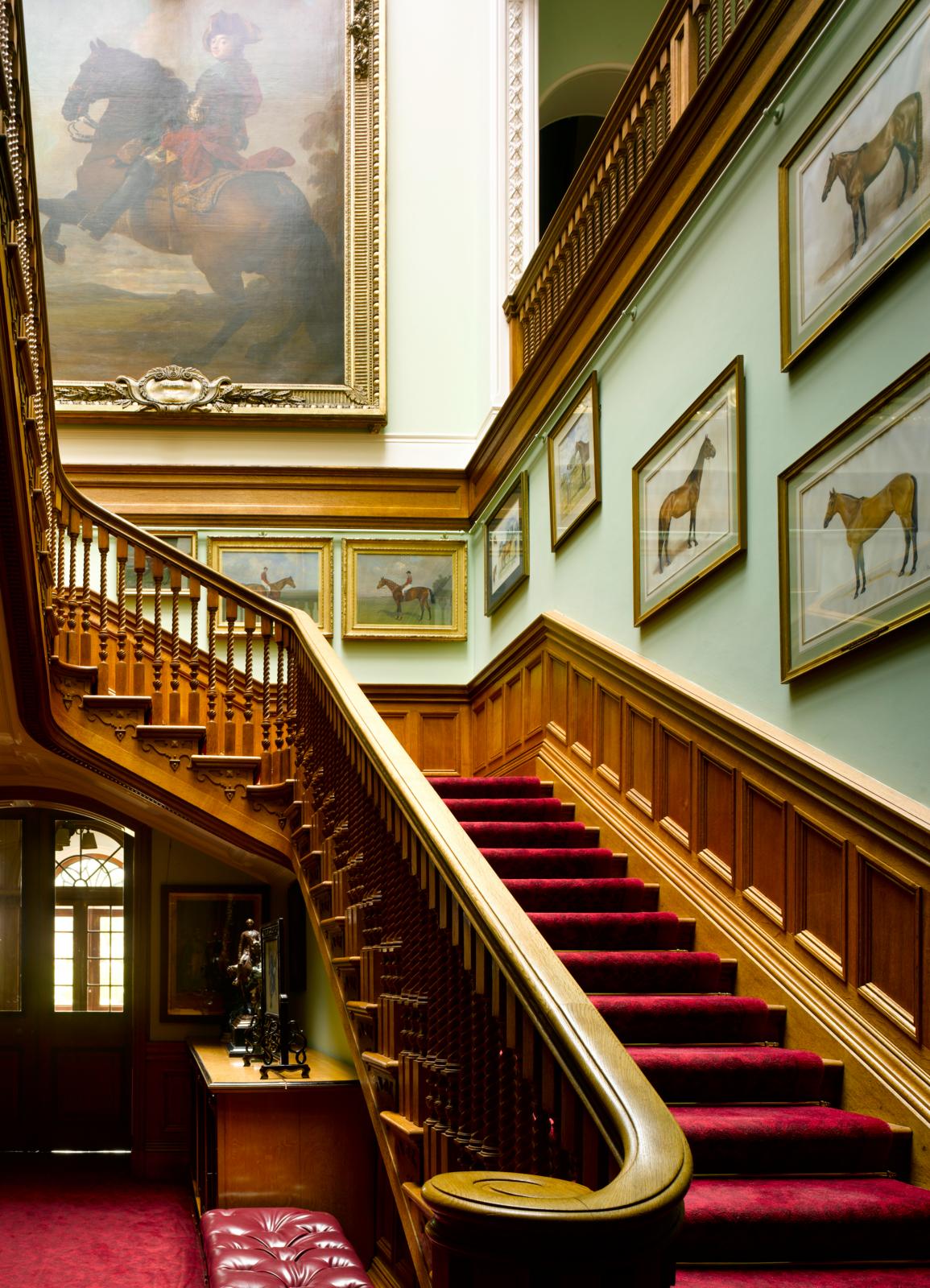
Sandringham House, as photographed in 2008 by Will Pryce for Country Life. ©Country Life Picture Library
The firm was responsible for not only the furniture, from nurseries and bedrooms to the kitchen, offices and main rooms, but also chimneypieces, architectural joinery, ornamental plasterwork, ‘wainscot’, floors and painting and papering, chintz and other textiles. It also executed the Turkish Room, now the ante-room to the library, under the direction of the Bavarian-born Orientalist artist Carl Haag, who had been court painter to the Duke of Saxe-Coburg and Gotha and was much patronised by the British royal family from the 1840s. It remains unaltered as one of the most interesting historical set-pieces at Sandringham.

Sandringham House, as photographed in 2008 by Will Pryce for Country Life. ©Country Life Picture Library
The Drawing Room is a tour de force of fashionable late-Victorian decoration, with white stucco ornaments, convincing French boiserie, large wall mirrors, pretty painted ceiling panels and overdoors. Its form as two interconnected rooms was repeated from the old house. The furnishing is largely unchanged and is complemented by white marble statues by Mary Thorneycroft, Edward Lanteri, G. G. Villar and Count Gleichen (Fig 10). Edward Hughes’ full-length portrait of Queen Alexandra (1896) still hangs over the chimneypiece.
A special feature of Sandringham is that many of the contents were presents from European royal relations to Edward VII and Queen Alexandra. In the dining room, the walls are hung with brightly coloured Madrid tapestries after the designs of Goya, given by Alfonso XII of Spain in 1876. In the Small Drawing Room, the Dresden china chandelier and elaborate frame to the pier glass were presents from Wilhelm II of Germany. Two little bronze cannons in the Ballroom were given by Napoleon III. More exotic gifts include the dinner gong a present from the Maharajah of Hill Tipperah to the Prince of Wales during his Eastern tour of 1875–6.

Sandringham House, as photographed in 2008 by Will Pryce for Country Life. ©Country Life Picture Library
The collection of Asian arms on the walls of the Ballroom was brought back from the same tour. The latter room is the largest in the house, 63ft long and 30ft wide, with an elaborate white-painted plaster barrel ceiling. In 1934, Queen Mary redecorated the room, replacing the original stamped leather with wallpaper, and bringing the handsome glass chandeliers by Osler of Birmingham from Buckingham Palace. Even the Ballroom Corridor holds works of art.

Sandringham House, as photographed in 2008 by Will Pryce for Country Life. ©Country Life Picture Library
Much of Sandringham’s special atmosphere comes from the sense of family continuity and strong personal association: the Holland & Sons fittings and furnishings, the royal portraits, the gifts from foreign heads of state and relations, but, above all, from the fact that it has always been loved.
It was noted of Queen Alexandra that she was ‘really happy here’. George V called it ‘dear old Sandringham’, and George VI told his mother, Queen Mary, ‘I love the place’. The same remains true today.
This article originally appeared in Country Life in 2008
-
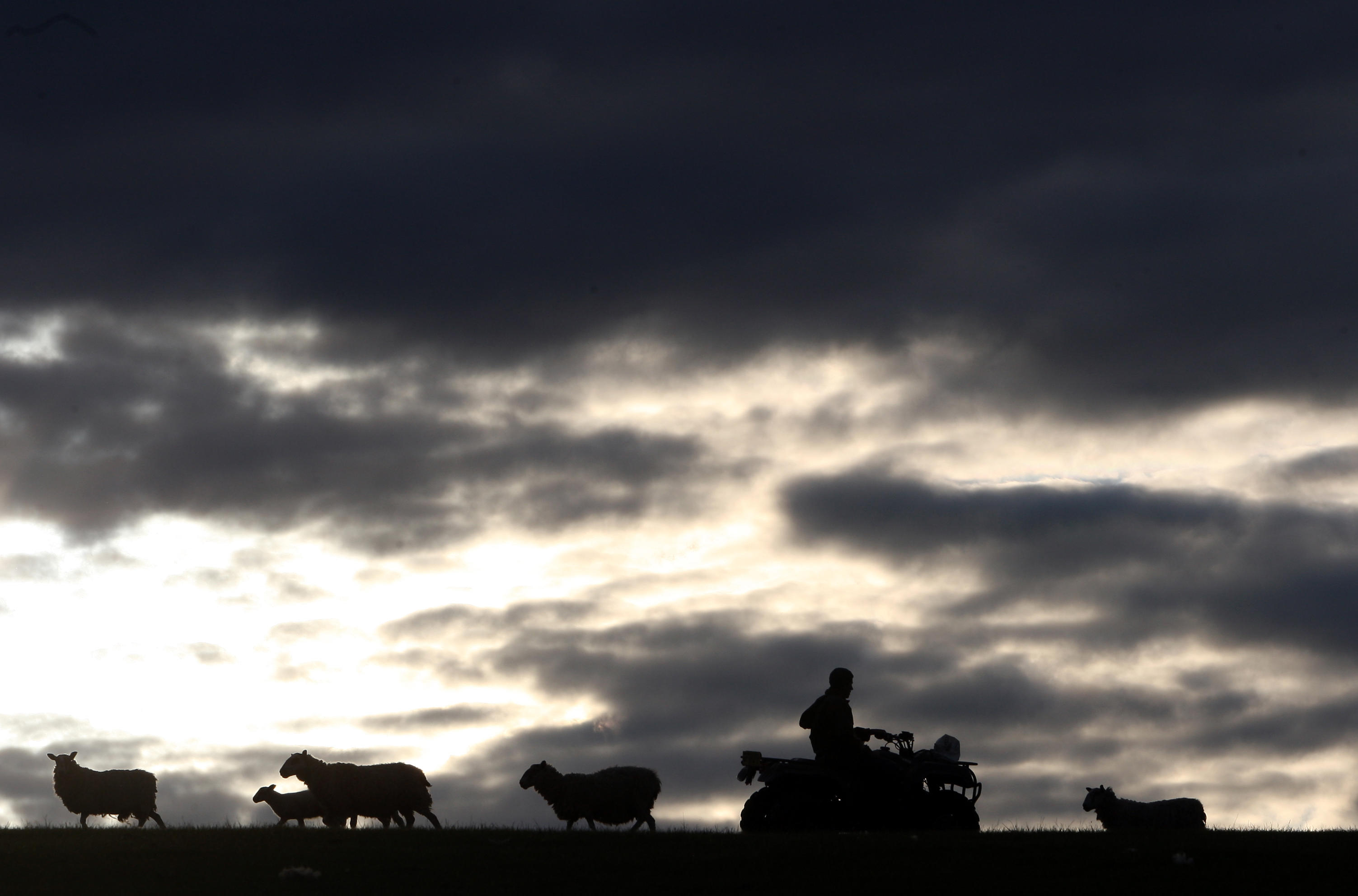 'I’m going to be the first in more than 100 years to sell anything off': How the upcoming budget uncertainty is impacting young farmers
'I’m going to be the first in more than 100 years to sell anything off': How the upcoming budget uncertainty is impacting young farmersChanges to inheritance tax, property relief and Defra budgets will likely change Britian's rural landscape. We ask the next generation of farmers what they think their future will look like.
-
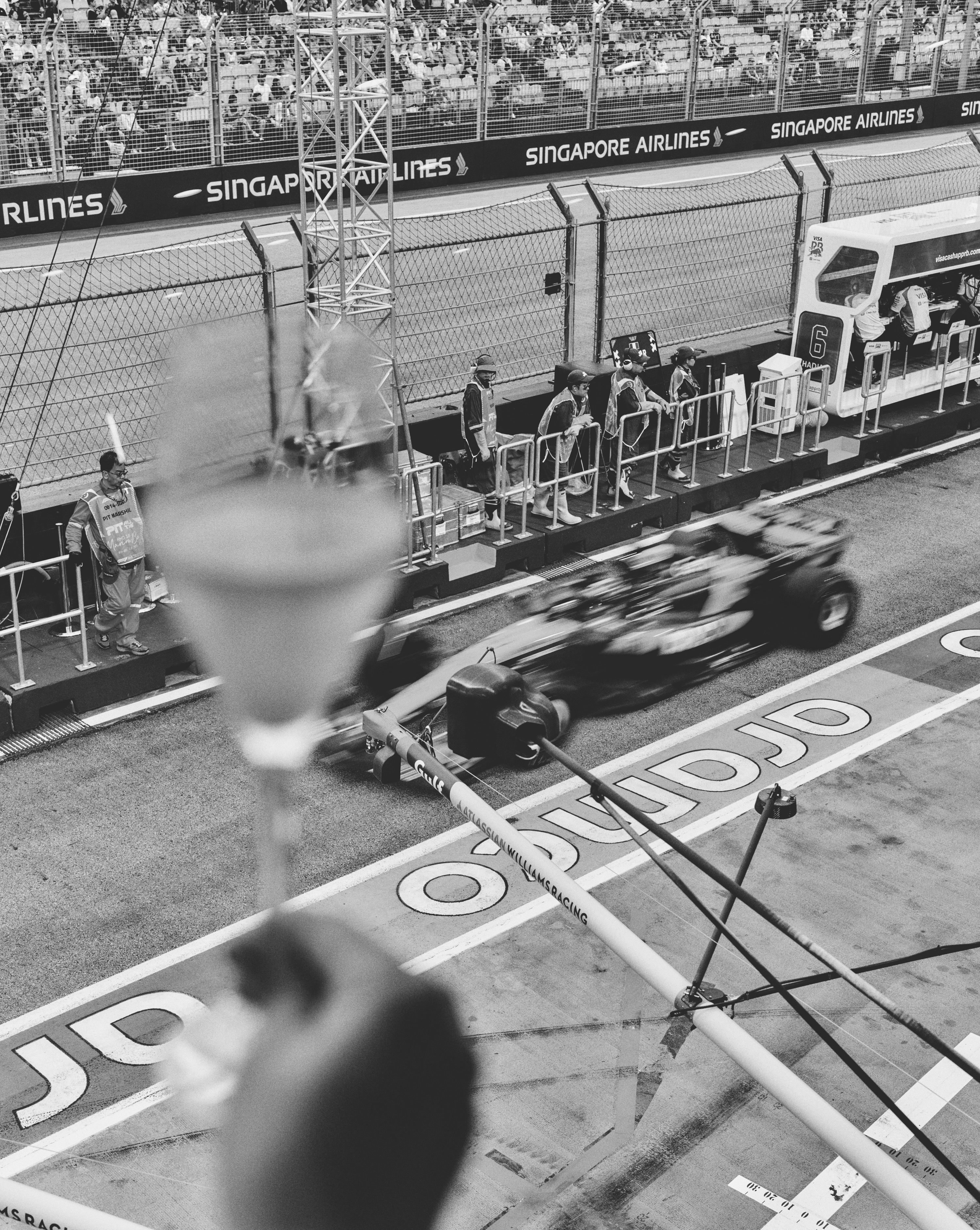 'The night smells like engine oil… and money': How Singapore’s glittering night race paved the way for a new era of city-centre Grands Prix
'The night smells like engine oil… and money': How Singapore’s glittering night race paved the way for a new era of city-centre Grands PrixIt's the Las Vegas Grand Prix this weekend, but it and other city-centre Grand Prix would be nothing without trailblazing Singapore. Natasha Bird explains how the city state got it so right.
-
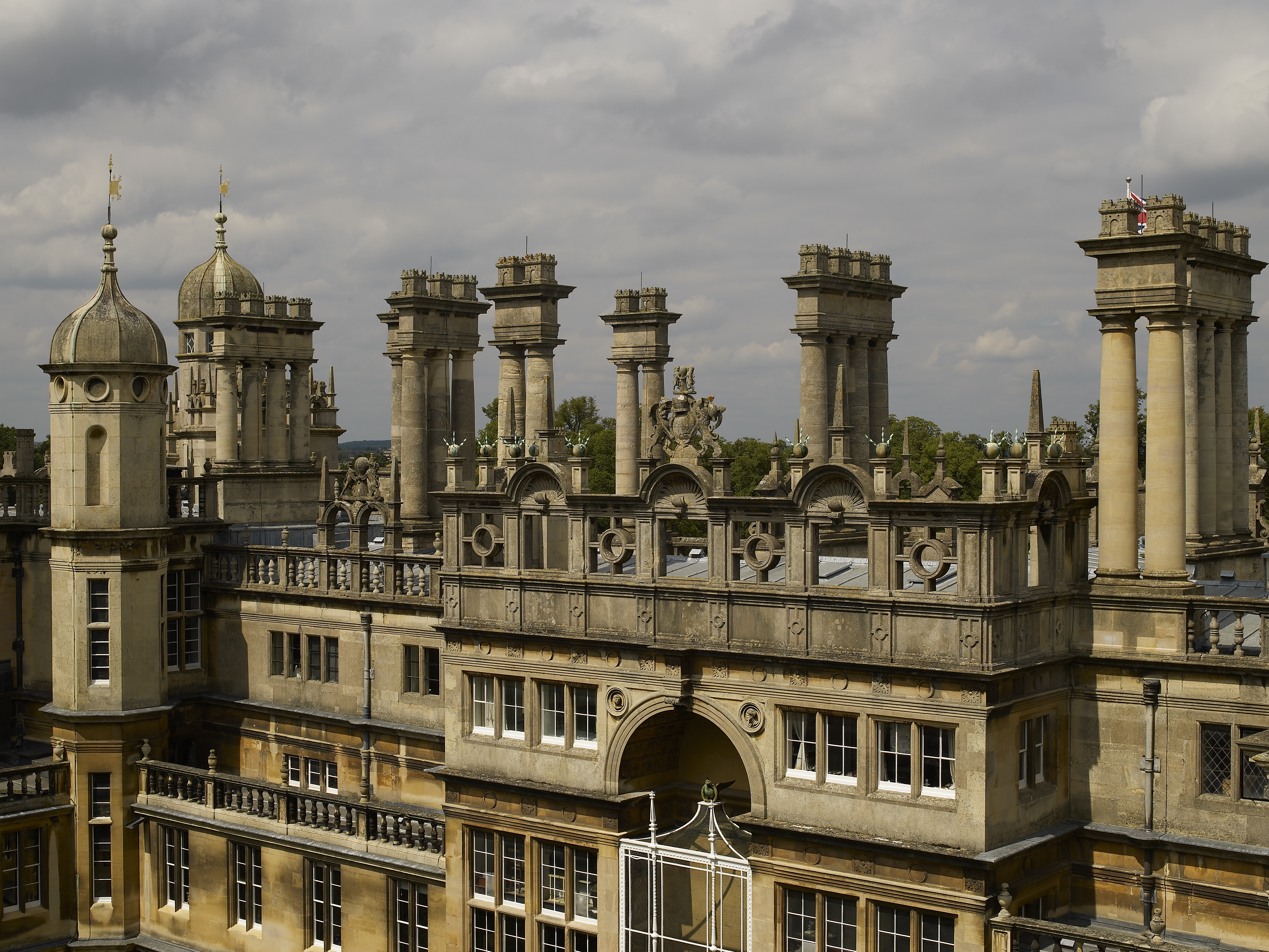 All fired up: 12 of our favourite chimneys, from grand architectural statements to modest brick stacks, as seen in Country Life
All fired up: 12 of our favourite chimneys, from grand architectural statements to modest brick stacks, as seen in Country LifeNothing says winter like a roaring fire, and plenty of the houses that we've photographed for the magazine's architectural places have fireplaces and chimneys worth boasting about.
-
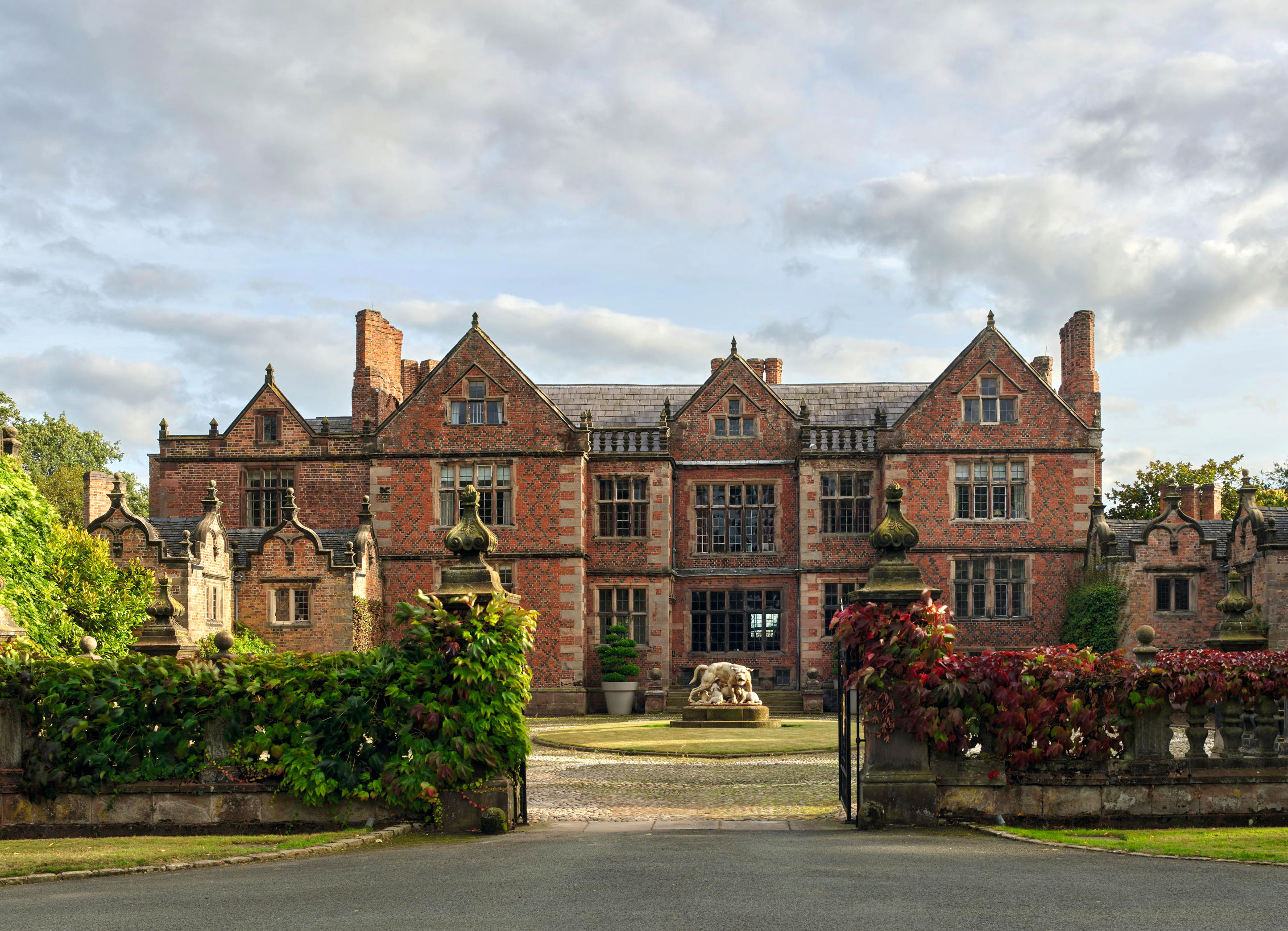 Dorfold Hall: The 'most neat and beautiful house of brick' that owes its existence to a desperate effort to secure succession
Dorfold Hall: The 'most neat and beautiful house of brick' that owes its existence to a desperate effort to secure successionDorfold Hall in Cheshire is an outstanding Jacobean house, but was an unexpected product of dynastic disappointment. John Goodall examines the remarkable circumstances of its construction; photographs by Paul Highnam for Country Life.
-
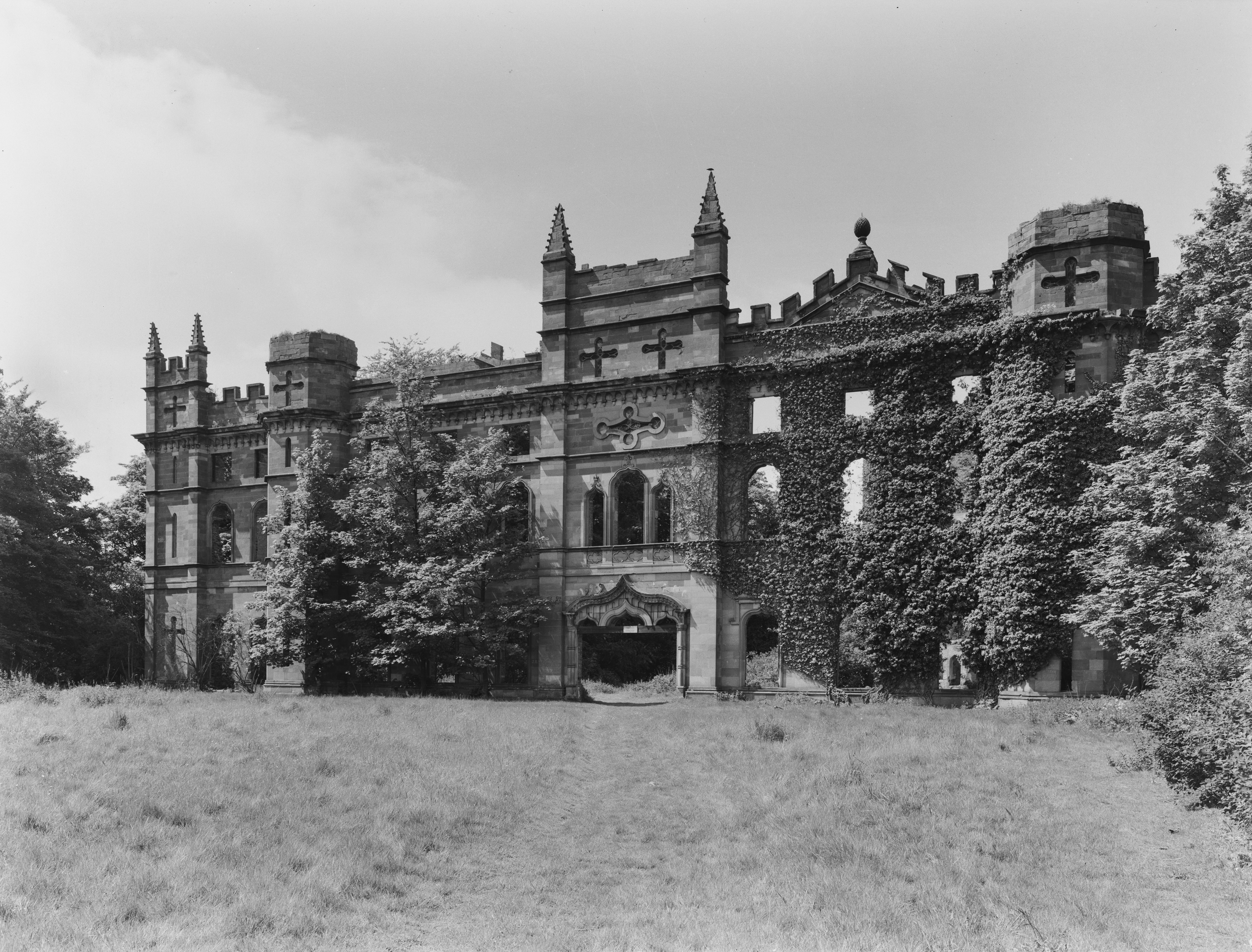 Only a handful of Britain's great houses were photographed by Country Life in a ruinous state. This once splendid Gothic castle is one of them
Only a handful of Britain's great houses were photographed by Country Life in a ruinous state. This once splendid Gothic castle is one of themThis is the tragic tale of Tong Castle, a once great Georgian-Gothic castle that was eventually consumed by Nature.
-
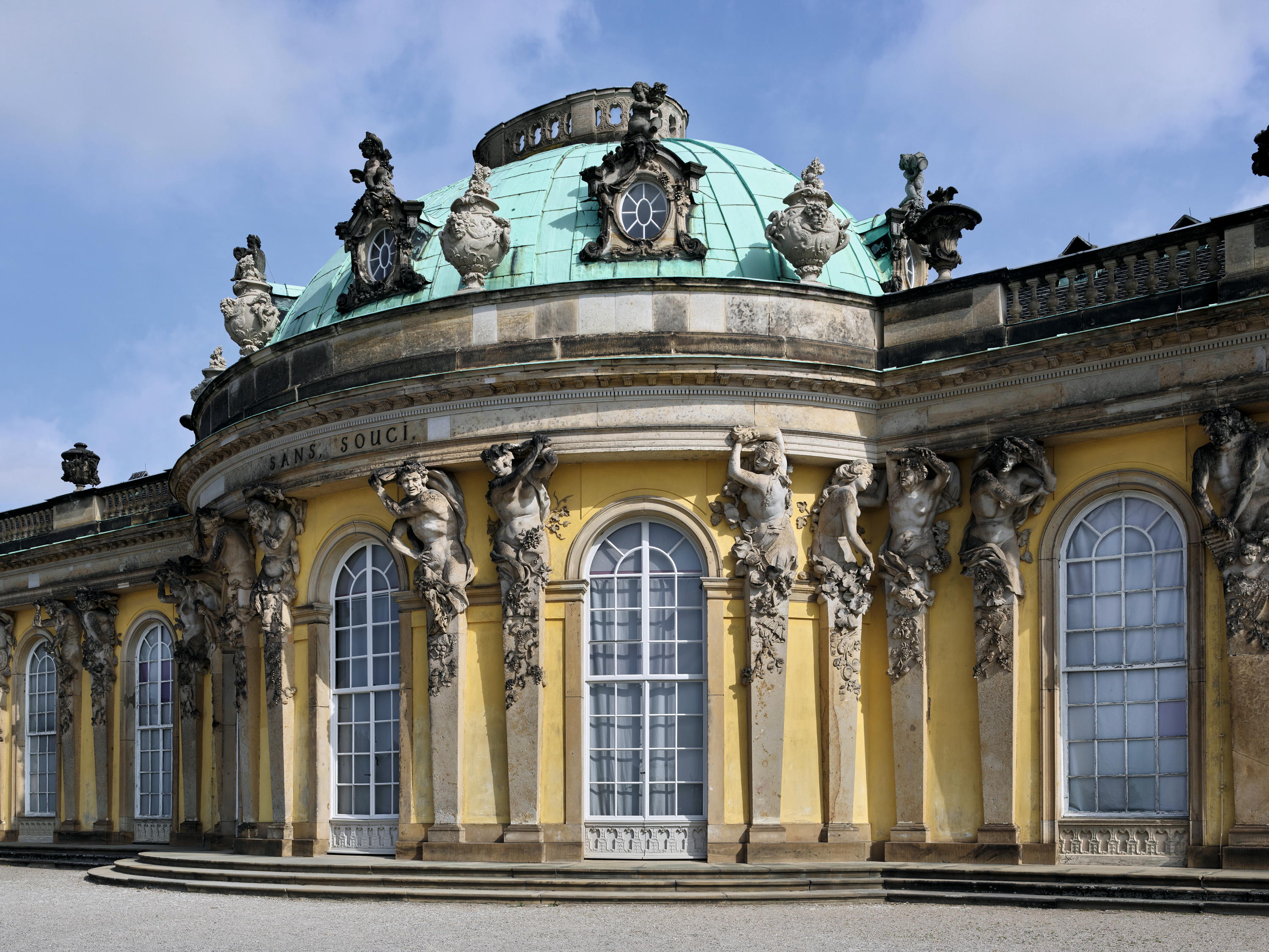 The Rococo jewel nestled into vineyard terraces that's a visual index of 'a king’s Enlightenment belief in knowledge, cultivation and the civilising power of Nature'
The Rococo jewel nestled into vineyard terraces that's a visual index of 'a king’s Enlightenment belief in knowledge, cultivation and the civilising power of Nature'A summer picnic in 1743 prompted Frederick the Great to create a retreat for himself outside his capital at Berlin. The result was the creation of Schloss Sanssouci in Brandenburg, as Aoife Caitríona Lau explains.
-
 Best in class: This year's Georgian Group Architectural Award winners revealed
Best in class: This year's Georgian Group Architectural Award winners revealedThe Georgian Group’s Architectural Awards, sponsored by Savills, attracted another outstanding crop of entries this year. We reveal the winners, as chosen by a panel of judges chaired by Country Life's Architectural Editor, John Goodall.
-
 The rise, fall, rise and eventual demolition of a Welsh wonder with an intriguing link to the Duke of Westminster
The rise, fall, rise and eventual demolition of a Welsh wonder with an intriguing link to the Duke of WestminsterMelanie Bryan delves into the Country Life archives and the history of one of Wales’s most extraordinary manor houses.
-
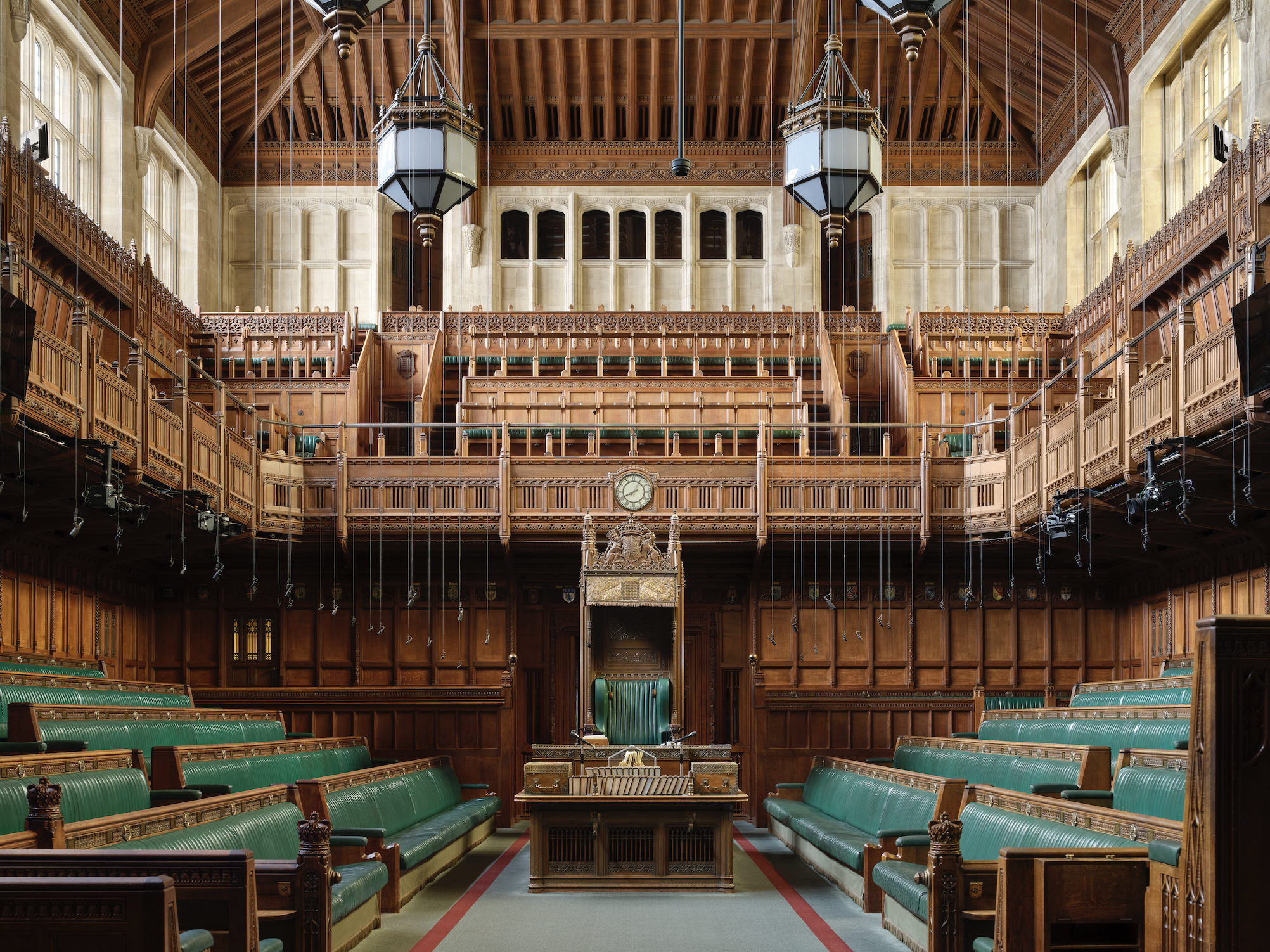 Exclusive: The House of Commons as you've never seen it before, 75 years on from reopening following its destruction during the Blitz
Exclusive: The House of Commons as you've never seen it before, 75 years on from reopening following its destruction during the BlitzThis year marks the 75th anniversary of the reopening of the House of Commons following the destruction of its predecessor in 1941 during the Blitz. John Goodall reports; photographs by Will Pryce.
-
 'A bluff, honest man in the trappings of greatness': The extraordinary story of the Foundling Hospital, and the sailor who saved the abandoned children of London
'A bluff, honest man in the trappings of greatness': The extraordinary story of the Foundling Hospital, and the sailor who saved the abandoned children of LondonA remarkable charitable endeavour to save abandoned children on the streets of London has a touching legacy in the form of the The Foundling Museum in the very centre of London. John Goodall tells its story; photographs by Will Pryce.
